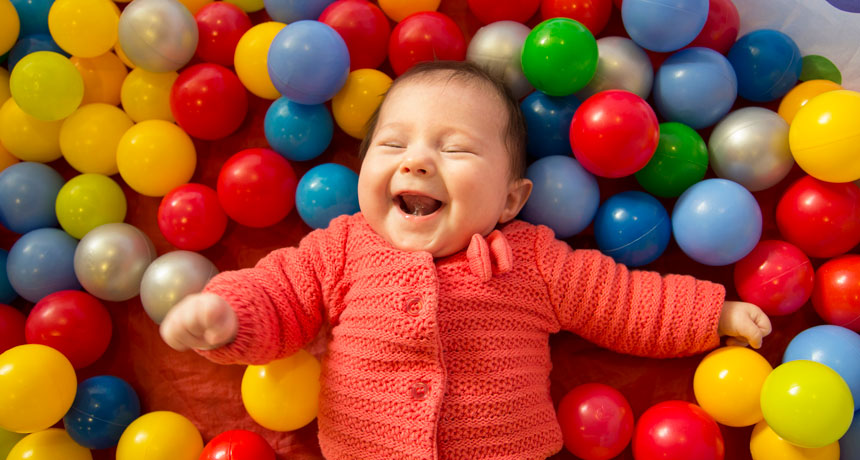Babies categorize colors the same way adults do

Lots of newborn decorations come in black and white, so that young babies can better see the shapes. But just because it’s easier for babies to see bold blacks and whites doesn’t mean they can’t see color.
Very few studies of color vision in newborns exist, says Anna Franklin, a color researcher at the University of Sussex in England. “But those that have been conducted suggest that newborns can see some color, even if their color vision is limited,” she says. Newborns may not be great at distinguishing maroon from scarlet, but they can certainly see a vivid red.
But as babies get a little older, they get remarkably adept at discerning the world’s palette, new research shows. Babies ages 4 months to 6 months old are able to sort colors into five categories, researchers report in the May 23 Proceedings of the National Academy of Sciences.
These preverbal color capabilities offer insight into something scientists have long wondered: Without words for individual colors, how do babies divvy up the hues across the color wheel, telling when blue turns to green, for instance?
Along with Franklin and colleagues, psychologist Alice Skelton, also of the University of Sussex, bravely approached this question. The team coaxed 179 4- to 6-month-old babies to calmly and repeatedly look at two squares, each 1 of 14 various colors.
After showing babies two squares of the same color over and over, the researchers made one of the squares a new color. Gazing at the new hue longer was a sign that the baby recognized the color as new. In this meticulous way, the researchers worked their way around the entire color wheel for each baby.
The experiment required stamina, from both Skelton and the young participants. “Sometimes you can have whole weeks where the babies just don’t want to do it,” she says. Despite that, she found the process enjoyable: “Babies are nice people.”
Babies, like adults, bin hues into red, yellow, green, blue and purple, Skelton and her colleagues found. “Given the commonalities and patterns you see in the way that languages divide up the color spectrum, we did expect that we would see some evidence of these same patterns in the way babies divide up the spectrum,” Skelton says. “What was surprising, for me at least, was how nicely it fell out.”
That discernment comes even though the babies probably don’t know the words for the colors. This suggests that babies are most likely born with these categories preprogrammed in their brains. The babies in the study came from just one culture. But “we anticipate that infants from different cultures would categorize color similarly,” Franklin says.
The results offer an interesting window into what’s happening in a baby’s brain as she learns about her world. And the results also come with a gentle suggestion: Don’t restrict your newborn’s art to black and white. She may already harbor a fondness for blue.